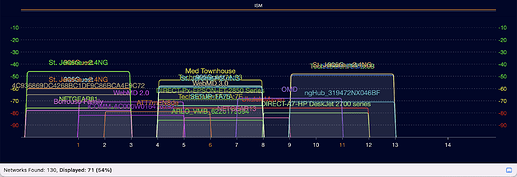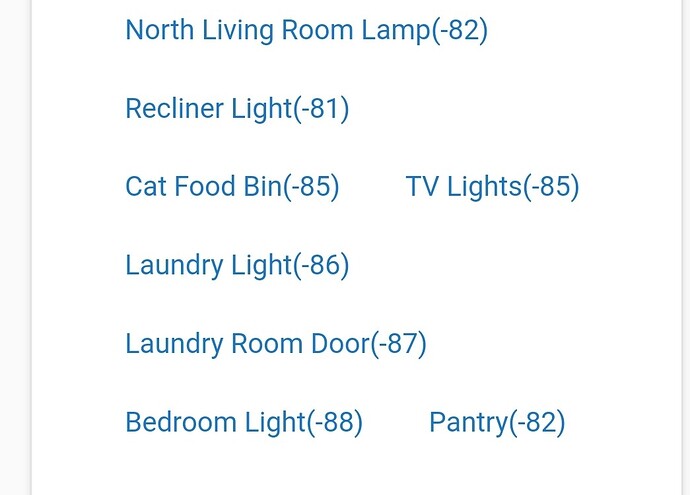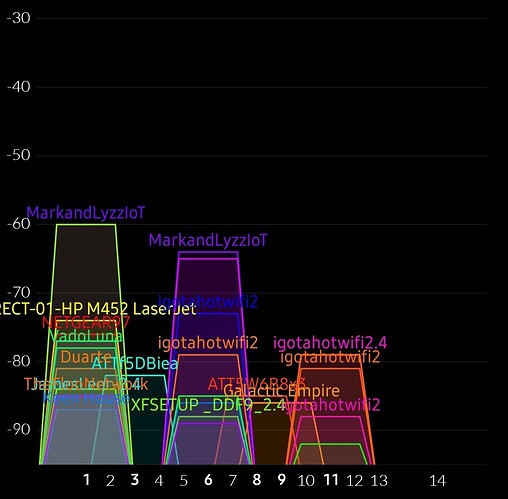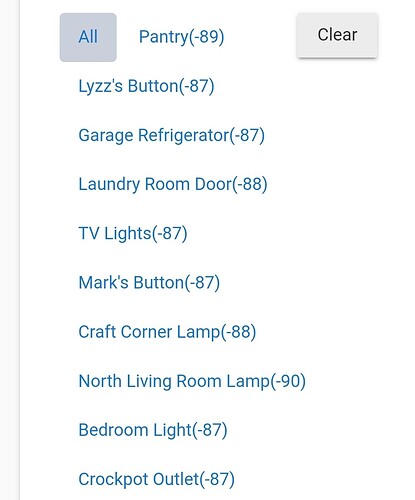Nobody mentioned that channel 26 is a low power Zigbee channel. Changing it to a different channel may help.
That's the RSSI figure (measure of signal strength that the hub recorded from the last hop). Typical good figures for Zigbee are in the -40's to -70's; when you get into the -80's the signal is approaching the level of noise. A good repeater or two can work wonders.
I find that a mesh with multiple good repeaters has also dramatically improved battery life on my end-devices (like contact/motion sensors).
That make sense... likely that lots fewer retries are required. Turning the radio on to transmit/retransmit a message takes orders of magnitude more power than the sensor would consume it its normal sleep state.
Just to put some numbers on it. Most (all?) of my end devices are on 3V coin cells. They used to fall "offline" when the battery voltage reached about 2.85V. They now fall offline at about 2.65V. In terms of time, that's the difference between ~1 year and ~2 years.
To add to this, I live in a townhouse community - the background noise in the 2.4 GHz spectrum is very high. Here's what it looks like on my iMac .... (Y-axis is signal strength in dBm)
And yet my zigbee networks are very very performant - I cannot recall the last time an event was missed. Good quality repeaters that are well-positioned make a huge difference.
I do have HORRIBLE battery life. Really sounds promising that I can get this corrected with a few smart plugs.
Out of curiosity, @aaiyar what channel ZigBee are you using to work well with WiFi?
i have two meshes. One with ~40 devices on zigbee channel 15. And one with 85 devices on zigbee channel 25.
One thing I would note, the noisier the environment is, the more repeaters are needed. Having plenty of repeaters in a busy environment, protects the mesh from occasional interference.
Aha - makes sense. The sweet spot in my home is about 1 repeater for about 4 end-devices.
I may need more. 3 dual band APs in just our house then plus the neighbors.
I am struggling with bridging a gap between buildings. Do you know if some repeaters more powerful than others? I am currently using the IKEA repeaters.
Without doubt.
Read this short thread. The Sonoff dongles described in it make excellent long-distance repeaters. And by long-distance I mean ~30-50 feet. Off course, you will have to flash them with router firmware (they come as coordinators) - but that is simpler than it sounds.
I’ve been really happy so far with the ZBDongle-E as a repeater and I’m going to get a few more of them to really fill in my mesh.
I replaced a bunch of wall plug switches that were in non-ideal locations in power outlets behind furniture with just a few ZBDongle-E(s). These dongles are really easy to place anywhere because they are USB powered (can use a USB extension cable).
I'm doing just under 100' line-of-sight with two different Ikea repeaters ...BUT... I used a 10' USB cable to get the repeater module of the Ikea units outside in a plastic weatherproofed box on the side of the buildings.
And....the neighboring WiFi traffic/overlap is pretty low so that may be a contributing factor.
Update: I got a 4 pack of Sonoff plugs and have installed 2 of them so far. Numbers are improving...
By the way this is what I'm up against
Damn! I thought things were going well but now I have bulbs dropping out. I have 5 repeaters total now but my numbers are still in the tank. @aaiyar think I need MORE repeaters?
These are current numbers
Further update:
I still have garbage numbers. I don't know what to do! Everything is still in the 80s at best. I've placed 4 new repeaters around the house and while they are reporting, I don't really see my problems improving. I did also switch my channel to 24 and all of my 2.4 wifi APs are on 1 and 6.
I bought two of these about a year ago. I haven’t seen them repeat for anything..ever.
I am using these (Innr Smart Plug - Amazon) as generic Zigbee repeaters for both Hubitat Zigbee and Philips Hue...no issues in over 2 years.
If you are also using Philips Hue, check to make sure that it is not trying to use the same Zigbee channel.
Well damn. That's unfortunate. How would I be able to tell if they are?





